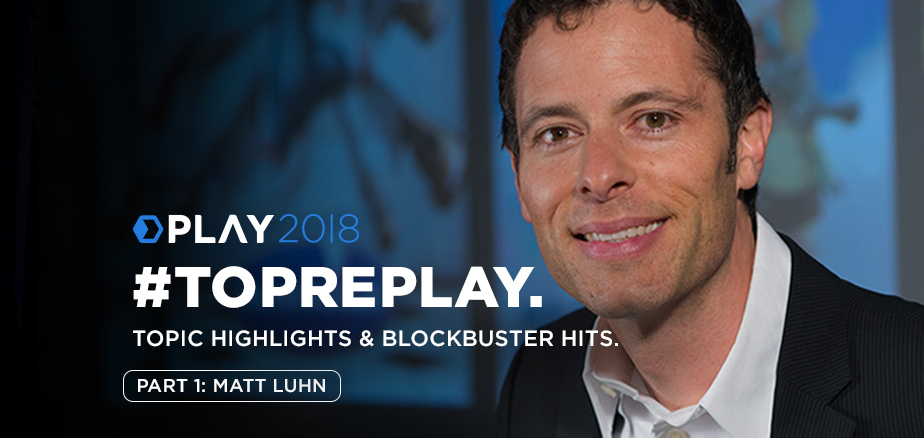Five Ways to Tell a Great Story - Matthew Luhn
Brightcove News

At PLAY 2018, keynote speaker Matthew Luhn talked about the power of storytelling. As a former Pixar animator, Luhn spent 25 years crafting some of the world’s greatest stories and characters. From Toy Story, Finding Nemo, Ratatouille, and Up, he's used his storytelling expertise to entertain audiences across the globe.
In his keynote speech, “The Art of Storytelling,” Luhn discussed the five most important things to remember when creating an impactful story, whether it’s a book, a movie, or even a digital ad.
1. The Hook
A person’s average attention span lasts about eight seconds. So to get people even a little interested in your story, you’ve gotta come correct. Think about this as your elevator pitch—a way to pique your audience’s interest with just a few words in a moment’s time. Luhn recommends creating a “what if” premise, one that’s unusual, unexpected, and rooted in conflict—something like, “What if superheroes were banned from saving people?” (premise of The Incredibles) or, “What if a rat dreamed of becoming a French chef?” (premise of Ratatouille).
2. Life-Changing Content
Another important element of great storytelling is character transformation, because as Luhn says, people love to see stories about characters who experience change. “Sometimes we feel change can embarrass us, and so we have to show in our story that people can, in fact, change.” Whether that’s a turn from arrogance to compassion, apprehension to bravery, or even kindness to evil, a good story should inspire us to want to try something new.
3. Connecting With the Right Crowd
If your idea is to target a certain group—say, moms, for example—Luhn says to craft a narrative that’s relative to that demographic. This can be done by collecting data to know what that group is all about. He uses this Vicks Nyquil ad to illustrate the point. It’s a theme common to all mothers, and it shows character transformation in visual form, emphasized even more by its contrasting colors.
If your aim is to connect with larger audiences—men, women, young, and old—Luhn recommends thinking universally, using universal themes built on fears and desires. Common motifs include fear of failure, abandonment, and not belonging, or the desire for love, safety, and freedom. Everyone can connect to these themes, since we’ve all experienced them at some point in time.
4. Authenticity
One of the most critical features of good storytelling is authenticity—your story has to be something you’re passionate about. “Be vulnerable. Be honest,” says Luhn, because inspiring stories come from a place of truth. At the same time, avoid force-feeding this narrative to your audience, since viewers want to be in charge of the takeaway; they don’t want to be told. He uses the film Finding Nemo as an example. Rather than definitively telling viewers the story’s theme about letting go of your kids so they can discover life on their own, the filmmakers subtly deliver that same message in a line of dialogue: “Well, you can't never let anything happen to him. Then nothing would ever happen to him.”
5. Structure
The world around us operates in beginnings, middles, and ends, all the time. Therefore, your story should be the same. Luhn says to structure your story in three phases: (1) the set-up, (2) the build, and (3) the payoff. The beginning should introduce the problem or explain the problem you want to solve. The middle should highlight the solution to this problem. And the end should show the final success and the excitement it brings. This can be crafted in a variety of ways, so creativity is key.


